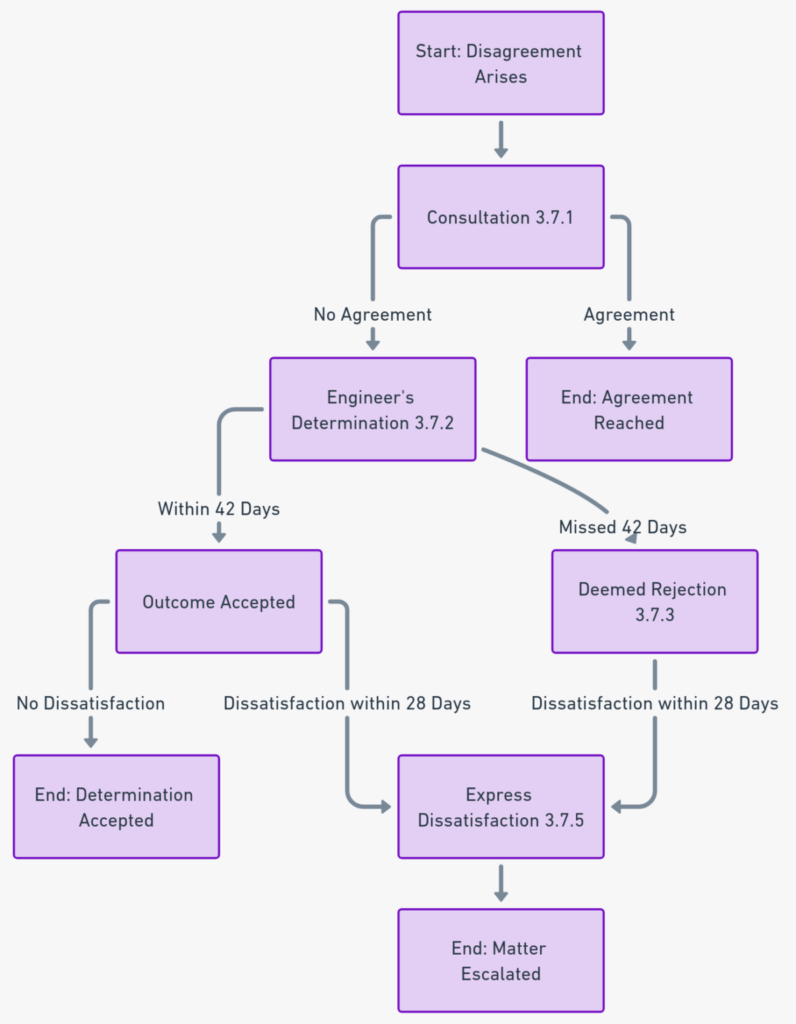Welcome to Wisdom Waves Hub, your go-to resource for expert insights on engineering, procurement, and construction (EPC) contracts. In this article, we will delve into the critical aspects of managing claims and changes in EPC contracts, providing you with a thorough understanding of the processes, key clauses, and practical steps necessary for effective contract management.
Introduction to EPC Contracts
EPC contracts, or Engineering, Procurement, and Construction contracts, are widely used in the construction industry to deliver complex projects. These contracts outline the responsibilities of the contractor in delivering a complete facility to the employer. Managing changes and claims effectively within these contracts is essential to ensure project success and avoid disputes.
The Concept of Contractual Change
Contractual changes are inevitable in any construction project due to unforeseen circumstances, changes in design, or evolving requirements. These changes can be categorized as:
- Bilateral Changes: Modifications agreed upon by both the contractor and the employer’s representative. These changes are typically negotiated and documented through change orders, ensuring that both parties are aligned on the adjustments to scope, cost, and schedule.
- Unilateral Changes: Changes initiated by the employer without the contractor’s concurrence. These are often administrative changes or terminations for convenience, as outlined in FIDIC Clause 15.
Categories of Changes
In the realm of EPC contracts, changes can be further classified into three types:
- Directed Changes: Changes explicitly instructed by the employer or engineer, often involving modifications to the design or specifications.
- Constructive Changes: Implied changes that arise from the employer’s actions or inactions, impacting the contractor’s performance without a formal change order.
- Cardinal Changes: Significant modifications that fundamentally alter the scope of the contract, potentially requiring a new agreement.
Claims and Disputes
Managing claims and disputes effectively is crucial for maintaining project momentum and avoiding costly legal battles. Claims can arise from various sources, including delays, unforeseen conditions, and contractual ambiguities. Understanding the distinction between excusable and non-excusable delays is essential:
- Excusable Delays: Delays beyond the contractor’s control, such as acts of God, government actions, and force majeure events (referenced in FIDIC Clause 19). These delays may entitle the contractor to extensions of time (EOT) and compensation.
- Non-Excusable Delays: Delays caused by the contractor’s default, such as poor project management or subcontractor issues. These delays typically lead to penalties and do not warrant EOT.
Effective Claims Management
To manage claims efficiently, follow these best practices:
- Proper Logging: Maintain detailed records of all project activities and communications to support claims.
- Timely Notice: Provide prompt written notice of delays or changes as required by the contract.
- Schedule Management: Regularly update and manage the project schedule to identify and mitigate potential delays.
- EOT and Claims: Submit EOT requests and claims with comprehensive documentation to justify delays and secure necessary extensions.
- Mitigation and Proactive Measures: Implement proactive strategies to address delays and minimize their impact.
- Substantiation and Evidence: Provide adequate evidence to support claims, including photographs, reports, and correspondence.
- Records and Data Management: Efficiently manage and organize records for easy access and reference.
Dispute Resolution Mechanisms
Various mechanisms can be employed to resolve disputes, including:
- Interest-Based Negotiation: Focusing on underlying interests to find mutually beneficial solutions.
- Third-Party Involvement: Engaging a neutral party to facilitate discussions.
- Mediation: A neutral mediator assists the parties in reaching a voluntary settlement.
- Mini-Trial: A structured settlement process involving senior management.
- Dispute Board: A panel established at the project’s start to provide informal advice and formal resolutions.
- Non-Binding Arbitration: An arbitrator makes a recommendation that the parties can choose to accept or reject.
- Ad Hoc Arbitration: Flexible arbitration where the parties select arbitrators and establish rules.
- Institutional Arbitration: Administered by an institution with established rules.
- Litigation/Lok Adalat: Taking the dispute to court or using alternative dispute resolution mechanisms.
Detailed Flowchart for Contract Change Management
Effective contract change management in EPC projects requires a systematic approach to handle modifications to the project scope, cost, and schedule. The following flowchart outlines the Contract Change Management System (CCMS), detailing the roles, processes, and documentation required to manage changes effectively.
Key Components of the Flowchart
1. Delay/Disruptive Event
At the center of the flowchart is the identification of a delay or disruptive event. These events can originate from various sources such as:
- Variation: Changes to the original contract scope.
- Design Error: Mistakes or omissions in the design documents.
- Abortive Works: Work that needs to be redone or abandoned.
- Other Relevant Events: Any other occurrences impacting project execution.
Once identified, these events are categorized as compensation events, necessitating documentation and action to manage their impact on the project.
2. Project Staff Responsibilities
Project staff play a critical role in documenting and managing the event. Their responsibilities include:
- Document Controller: Manages all project documentation and ensures records are up-to-date.
- Site Engineer: Oversees on-site activities and reports any issues.
- Project Manager: Coordinates the overall project and manages changes.
- Designer: Adjusts design documents as needed.
- Quantity Surveyor: Assesses cost implications of changes.
3. Event Record (ER) Sheet
The Event Record (ER) sheet is a pivotal document in the change management process, capturing essential information such as:
- ER Reference Number
- Date of the Event
- Project Name
- Package Reference
- Location
- Originator
- Cause of the Event
- Classification as Critical or Non-Critical Event
- Detailed Description of the Event
- Cost Impact
- Time Impact
- Mitigation Strategy
This sheet is updated with initial and final estimates as the situation evolves.
4. Role of the Planning Manager
The planning manager utilizes the ER sheet to:
- Update the project schedule.
- Maintain a delay analysis table.
- Prepare a detailed delay analysis. This analysis integrates documents and records within project management software such as Primavera, ensuring all changes are accounted for in the project timeline.
5. Role of the Commercial/Claim Manager
The commercial or claim manager is responsible for:
- Maintaining the CCMS.
- Issuing contractual notifications.
- Submitting interim particulars.
- Leading the claim process.
- Coordinating with legal and HQ support as necessary.
6. CCMS Server
All ER sheets and related documents are uploaded to the CCMS server, a centralized data repository that can be local or cloud-based. It ensures accessibility and data integrity and includes:
- Claims
- Event Records (ER)
- Programmes and Delay Analysis
- Contract Specifications
- Drawings and Designs
- Correspondence and Reports
7. Sub Folders and Records Management
The system categorizes claims into subfolders for easy access and organization. Each claim folder contains:
- Claim Narratives
- Quantum and Cost Calculations
- Delay Analysis
- Correspondence
- Contemporary Records
These subfolders ensure systematic organization of all relevant documentation, facilitating efficient claims management.
8. Access Point
Project team members and stakeholders access the data through a designated access point. This facilitates transparency and efficient management of contract changes, allowing authorized personnel to retrieve necessary information quickly.
By following this structured process, project teams can manage contract changes systematically, ensuring that all necessary steps are taken to document, analyze, and mitigate the impact of delays and disruptive events. Proper management of contract changes is essential for maintaining project progress and minimizing disputes.
Table: Summary of Key Elements in Managing Claims and Changes in EPC Contracts
| Category | Description | Relevant Clauses/Points |
|---|---|---|
| Contractual Changes | Bilateral Changes: Modifications agreed upon by both contractor and employer’s representative.<br>Unilateral Changes: Changes initiated by the employer. | FIDIC Clause 13 (Variations and Adjustments)<br>FIDIC Clause 15 (Termination by Employer) |
| Types of Changes | Directed Changes: Explicit instructions for design/specification changes.<br>Constructive Changes: Implied changes impacting performance.<br>Cardinal Changes: Major changes altering the contract scope. | |
| Claims & Disputes | Excusable Delays: Beyond contractor’s control (acts of God, government actions, force majeure).<br>Non-Excusable Delays: Due to contractor’s default. | FIDIC Clause 19 (Force Majeure)<br>FIDIC Clause 15 (Employer’s Rights on Non-Excusable Delays) |
| Claims Management | Proper Logging: Maintain detailed records.<br>Timely Notice: Provide prompt written notice.<br>Schedule Management: Regular updates.<br>EOT and Claims: Submit with documentation.<br>Mitigation: Proactive strategies.<br>Substantiation: Provide evidence.<br>Records Management: Organized records. | |
| Dispute Resolution | Interest-Based Negotiation: Focus on underlying interests.<br>Third-Party Involvement: Neutral facilitation.<br>Mediation: Assisted voluntary settlement.<br>Mini-Trial: Structured settlement process.<br>Dispute Board: Informal advice and formal resolutions.<br>Non-Binding Arbitration: Advisory recommendation.<br>Ad Hoc Arbitration: Flexible rules.<br>Institutional Arbitration: Administered by an institution.<br>Litigation/Lok Adalat: Judicial/alternative resolution. | FIDIC Clause 20 (Claims, Disputes, and Arbitration) |
Conclusion
Effective management of claims and changes in EPC contracts is vital for the success of construction projects. By understanding the key clauses, implementing best practices, and utilizing appropriate dispute resolution mechanisms, you can navigate the complexities of EPC contracts with confidence.



